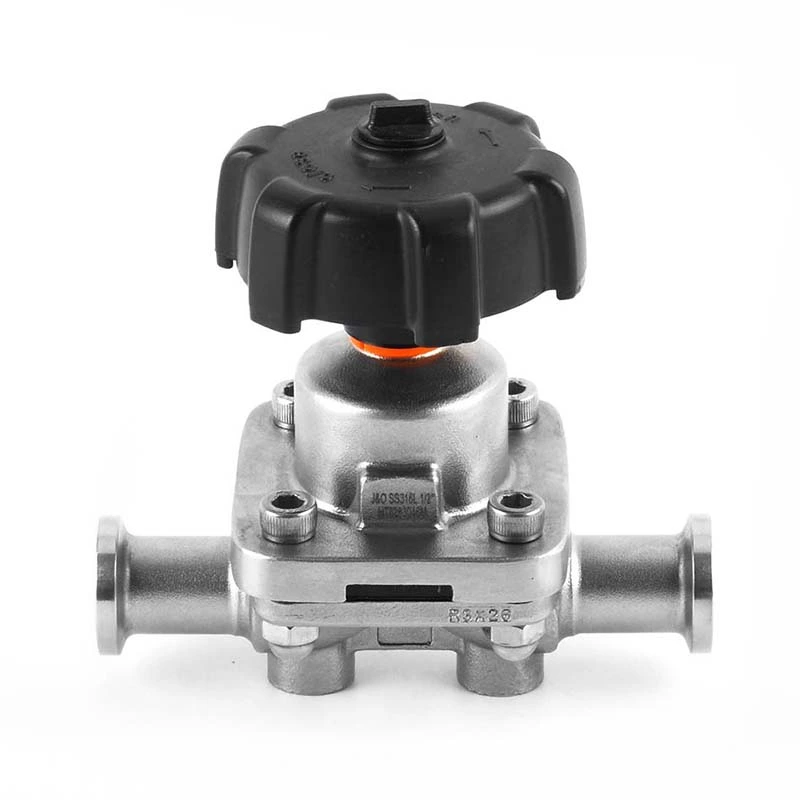Selection Of Diaphragm Valve Flow Characteristics
Sanitary Diaphragm Valve Selection of flow characteristics
The flow characteristics of pneumatic diaphragm valves refer to the relationship between the relative flow rate of the medium flowing through the valve and the displacement (relative opening of the valve). The ideal flow characteristics mainly include straight line, equal percentage (logarithm), parabola and quick opening, characteristic curve and valve core shape. Commonly used ideal flow characteristics are only straight line, equal percentage (logarithm) and quick opening. The parabola flow characteristic is between the straight line and the equal percentage, and can generally be replaced by the equal percentage characteristic, while the quick opening characteristic is mainly used in two-position regulation and program control. Therefore, the selection of pneumatic diaphragm valve characteristics is actually the selection of straight line and equal percentage flow characteristics.
The selection of flow characteristics of rubber-lined diaphragm valves and fluorine-lined diaphragm valves can be calculated theoretically, but the methods and equations used are very complicated. At present, empirical criteria are mostly used, specifically considering the following aspects: ① Analyze and select from the regulation quality of the regulation system; ② Consider the process piping situation; ③ Analyze from the load change situation.
After selecting the flow characteristics of the diaphragm valve, the shape and structure of the valve core can be determined according to its flow characteristics. However, for diaphragm valves, butterfly valves, etc., due to their structural characteristics, it is impossible to achieve the required flow characteristics by changing the curved surface shape of the valve core. At this time, it can be achieved by changing the feedback cam shape of the valve positioner.
The selection and determination of the caliber of the British standard diaphragm valve is mainly based on the flow capacity of the valve, that is, Cv. When designing and selecting instruments for various projects, the Cv of the diaphragm valve must be calculated, and the diaphragm valve design manual must be provided. From the Cv calculation of the diaphragm valve to the determination of the valve caliber, the following steps are generally required:
1) Determination of the calculated flow rate. The existing production capacity, equipment load and medium conditions determine the Qmax and Qmin of the calculated flow rate.
2) Determination of the pressure difference before and after the valve. Select S (resistance coefficient) according to the selected valve flow characteristics and system characteristics, and then determine the calculated pressure difference.
3) Calculate Cv. Select the appropriate calculation formula and chart according to the regulated medium to obtain Cmax and Cmin.
4) Select Cv. According to Cmax, select the first level C that is >Cmax and closest to it in the selected product standard series.
5) Diaphragm valve opening verification. Generally, the opening at the maximum calculated flow rate is required to be ≯90%, and the opening at the minimum calculated flow rate is required to be ≮10%.
6) Verification of the actual adjustable ratio of the diaphragm valve. Generally, the actual adjustable ratio is required to be ≮10.
7) Determination of the valve seat diameter and nominal diameter. After verification, determine according to C.
The selection of diaphragm valves is a very meticulous work, which requires not only solid professional theoretical knowledge but also rich practical experience. A good selection is not only conducive to the adjustment of the PID parameters of the control loop, so that the adjusted parameters can be better controlled, but also greatly increases the service life of the diaphragm valve. The selection of diaphragm valves should be adapted to local conditions, not static, and should be continuously summarized and innovated in the process of practice. Especially with the application of mechatronics technology, computers and digital information technology, the structure and function of diaphragm valves have become better and more comprehensive, which provides great convenience for the selection of diaphragm valves.
